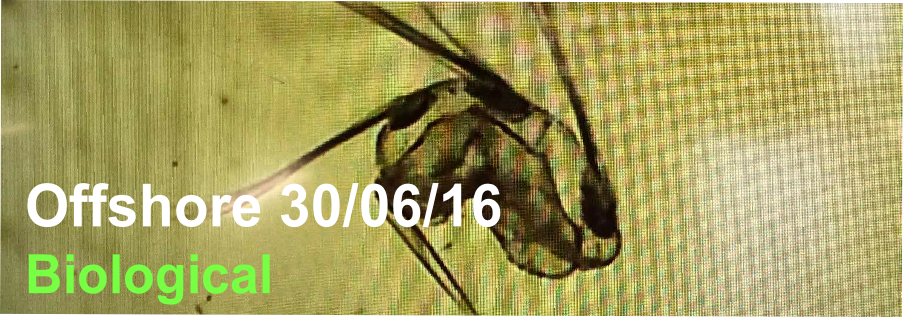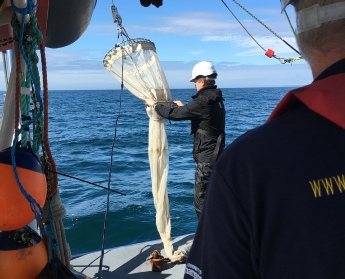

Having done three deployments of the zooplankton net and collected samples of phytoplankton from the Niskin bottles (as with chemical samples); the samples were then analysed. Samples were looked at under microscopes, and the organisms found were noted and tallied.

100 ml of sample from the CTD, was collected in a labelled glass bottles containing
1 ml of Lugols solution, to preserve the biology. Upon return to the lab, samples
were placed into a Sedgewick-

On Callista, zooplankton samples were taken for lab analysis. Firstly, a net (200 mm mesh size/51.5 cm diameter opening). Attached to the bottom of the net was a bottle for collection of the water containing the zooplankton sample. At station 55 and 56 one net was dragged from 30 metres to 16 metres, and another from 16 metres to the surface; at station 58 the net was dragged from 12 metres to the surface. This was transferred to another, separate numbered bottle for each of the 5 samples where zooplankton were collected. Bottles were frozen overnight prior to lab analysis.
Each bottle had 10 ml of water taken – 5 ml of this was examined under a microscope at a time and the number of each species of zooplankton were identified, counted and tallied. The organism counts were used to estimate the number in sample per m3.


- The zooplankton net was weighted, however, the current at several of the stations was strong enough to push it sideways, meaning the depth that the pressure meter recorded varied. This meant that some of the depths recorded from the vertical grabs were not exact. Therefore, some zooplankton may have been attributed to the wrong depths. However, the differences were only a few metres, so the difference most likely did not have a huge effect on the results.
- All went according to plan for the biological samples. They were all preserved successfully with no problems.
The views and opinions expressed on this website are those of individuals within group 8 and are not associated with The National Oceanography Centre, University of Southampton or Falmouth Marine School.